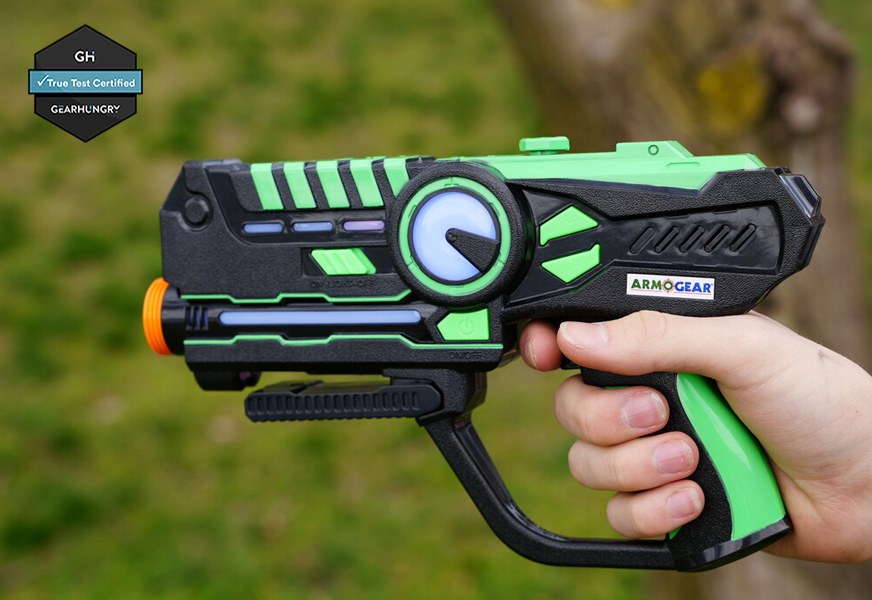

The UltraClear treatment itself was genuinely not painful to me it was more comfortable than the ultra-mild Clear + Brilliant (or “Baby Fraxel”) treatment delivered with numbing.
#BEST LASER TAGGER FULL#
To get the full experience, I used no numbing cream prior to the treatment, but held a tube blowing cold air to soothe as needed. However, on the day of my appointment, I had an unexpected breakout of dermatitis from my nose to my chin, so we were only able to treat my cheeks.
#BEST LASER TAGGER SKIN#
In addition to my vitamin C during the day (I alternate between DMK Melanotech Drops and Luzern Serum Absolut V15), I used the SkinMedica Even & Correct Brightening Treatment Pads, or Sarah Ford Pigment Pads on nights I didn’t want to exfoliate.Īt my consultation, we decided on a more surface-level setting, with the goal of reducing fine lines, refining the texture of my skin, and evening out my skin tone. “It is this balance between cold and heat that minimizes unwanted thermal damage, and thus skin damage.” My experience with the UltraClear laserīecause of my concerns about rebound pigment, Ablon had me preemptively incorporate pigment-treating ingredients like niacinamide, tranexamic acid, kojic acid, and arbutin into my skincare regimen leading up to UltraClear treatment. “What distinguishes UltraClear’s cold fiber laser technology is that it relies on very fast and precise multilevel micro pulses to … balance cold and thermal energy to safely treat all skin types,” says Ablon, who offers the treatment at her Santa Monica–based practice. Over time, newer technologies are becoming quicker, more precise, and more efficient, harnessing specific wavelengths of fractionated energy to target parts of the tissue more strategically.īoard-certified aesthetic dermatologist Glynis Ablon of Ablon Skin Institute & Research Center explains that it is UltraClear’s fractionated nature and the speed of its emission that makes the device so much less painful. “The theory behind controlled injuries and inflammation for skin anti-aging is that the tissue is primed by the injury, which then begins the healing ,” Cohen says. The cold laser’s underlying mechanism for skin rejuvenation is the same as a conventional resurfacing laser’s. On the UltraClear’s gentlest settings, he says, the results could be comparable to a Cosmelan or Obagi chemical peel. “Compared to conventional lasers, the UltraClear should be a bit less painful during the actual treatment,” says board-certified plastic surgeon Steven Cohen, medical director of Faces+ Plastic Surgery, Skin, and Laser Center and co-founder of the London Regenerative Institute. The UltraClear laser operates at the 2,910-nanometer wavelength using an erbium diode fiber, purportedly at the sweet spot where both pain (0–3 on a scale of 1–10) and downtime (roughly four days) are minimized.

“The lack of heat makes technically every Fitzpatrick type a candidate for a cold laser, as opposed to heat-based lasers, which you have to be more careful about for darker skin tones.” “A cold laser utilizes low-energy or low-wavelength light, and most importantly, is not heat-based,” says board-certified plastic surgeon Cat Chang, founder of NakedBeauty MD. This is what piqued my interest in UltraClear, a “cold” ablative laser device that launched last year. Deeper skin tones, a predisposition to melasma, and skin conditions like acne can all lead to hit-or-miss results when it comes to certain lasers. The gist is that aggressive, heat-based devices work great for some, but not for all. “That’s a lot of what youth is: smooth transitions of highlights and convexity, avoiding harsh transitions on the face.” “When you’re attacking that fat, you’re ruining the layer that makes everything look smooth and plush on the face,” he tells. Board-certified plastic surgeon Jason Roostaeian has seen firsthand how the deep delivery of heat can cause scar tissue and deteriorate subcutaneous facial fat that is critical for longevity. The more common complaint about heat-based treatments is that they are quite painful, requiring numbing or laughing gas, and often downtime.

We both noticed that the pigment on my face had worsened rather than improved. Celebrity esthetician Celeste Rodrigues once had to help me through months of purging, after my treatment with a radiofrequency microneedling device. I have personally experienced breakouts of acne, milia, and rebound pigmentation from the delivery of deep heat treatments, making the rewards not worth the risk. But I tend to favor non-heat-based treatments paced over multiple sessions and coupled with regenerative ingredients. Heat has its time and place at the derm’s office, with treatments like radiofrequency microneedling and skin-tightening ultrasound gaining popularity.



 0 kommentar(er)
0 kommentar(er)
